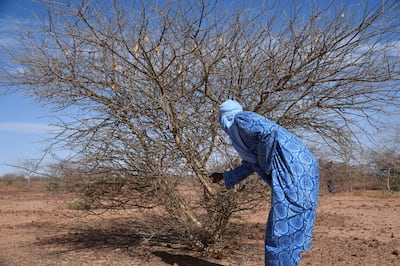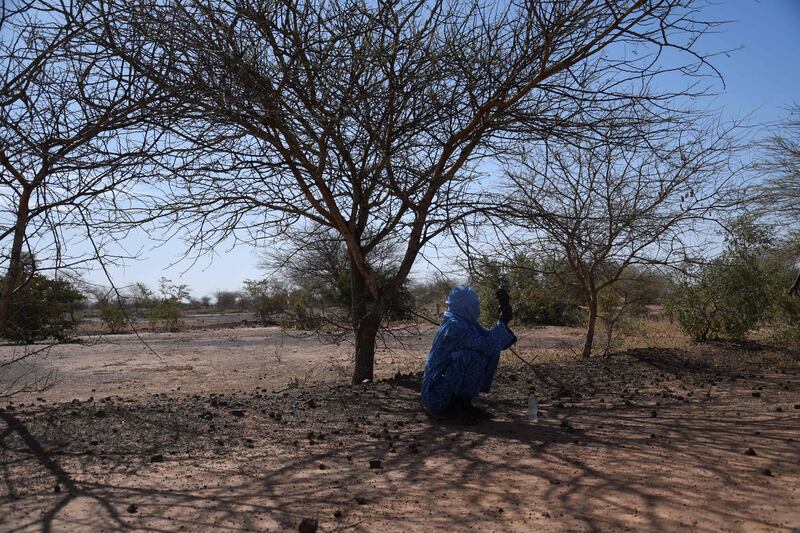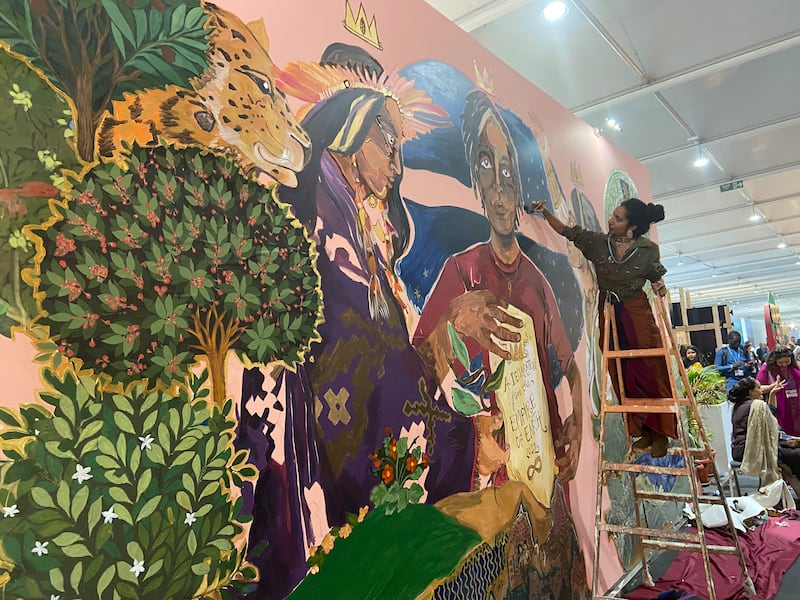Activists at Cop27 are calling for a “Paris Agreement for nature” to prevent land degradation and biodiversity loss.
“We are losing biodiversity at the fastest rate in history,” said Lucy Almond, director and chair of Nature4Climate, at a panel for the summit’s Biodiversity Day on Wednesday.
“CBD [the Convention on Biological Diversity] must deliver that Paris moment for nature,” she said.
Marco Lambertini, director general of World Wildlife Fund International, echoed the same message.
“We want a Paris-style agreement for nature,” he said. “What we can learn is to move faster. It took too long to realise we are in a disaster.”
The Paris Agreement, adopted by 196 parties in 2015, aims to limit global warming this century to well below 2ºC above pre-industrial levels and pursue efforts to limit it to 1.5ºC.
Under the treaty, countries submit nationally determined contributions to report on their progress.
The CBD, adopted at the 1992 Earth Summit in Rio de Janeiro, has three main goals: the conservation of biological diversity, the sustainable use of its components, and the fair and equitable sharing of benefits arising from genetic resources.
In pictures - Cop27's Blue Zone
But environmentalists, campaigners and experts say that is not enough. They are asking for a global biodiversity framework that would include conservation targets and progress reports similar to the NDCs.
After Cop27 in Sharm El Sheikh concludes on Friday, another “Cop” will follow next month in Montreal, Canada.
At the UN Biodiversity Conference Cop15, governments are meant to come together to agree on a new set of goals to guide global action throughout this decade to stop and reverse nature loss.
The UN Decade on Ecosystem Restoration runs from 2021 through 2030, the deadline for the 17 Sustainable Development Goals and the timeline scientists have set as the last chance to prevent a climate change catastrophe.
Wildlife populations have fallen by nearly 70 per cent over the past five decades, according to the WWF’s Living Planet report released in October.
It described climate change and biodiversity loss as “two sides of the same coin”.
“Climate change and nature loss are not only part of the same challenge. They are interconnected and reinforcing each other,” Mr Lambertini said. “They are equal dangers to the future.”
Nature-based solutions
While the solutions to biodiversity loss and land degradation require financial and political commitments, countries have been warned that they cannot afford to ignore the problem.
The World Economic Forum estimates that $44 trillion of economic value generation — over half of global total GDP — is dependent on nature.
“The economic case for nature preservation has never been stronger,” Mr Lambertini told The National.
“Nature is effectively providing so many services to the economy, so it’s not just about the economy, but it’s also about the economy.”
Nature-based solutions have been shown to be cost-effective, have regenerative abilities and help fight climate change.
For example, farmer-managed natural regeneration involves the regrowth of trees and shrubs from felled tree stumps, root systems or seeds, rather than planting new ones.
Tony Rinaudo, an Australian agronomist, pioneered the method as he helped to transform millions of hectares of dry land in Niger.
“With nature-based solutions, it’s not an either-or,” Mr Rinaudo, principal natural resources adviser at World Vision Australia, said at a separate panel. “Despite the success, there is a lack of awareness globally on the potential of this method.”

Projects that regenerate land or biodiversity are not always seen as profitable or bankable by investors.
That is changing with initiatives such as 1,000 Landscapes for 1 Billion People, which seeks to bring different sectors — for example, forests and fisheries — together into infrastructure projects that can be presented to investors.
“The good news is that investors are getting really excited about restoration and wanting to pay for it,” said Paul Chatterton, founder and chief executive of the Landscape Finance Lab.
Nico Janssen, programme lead for agricultural livelihoods at the Ikea Foundation, said society had to change the narrative to appreciate what the planet is providing and how it is being exploited.
“We need a radical transformation of this system, so that people, nature and climate collaborate much better,” Mr Janssen said.


















